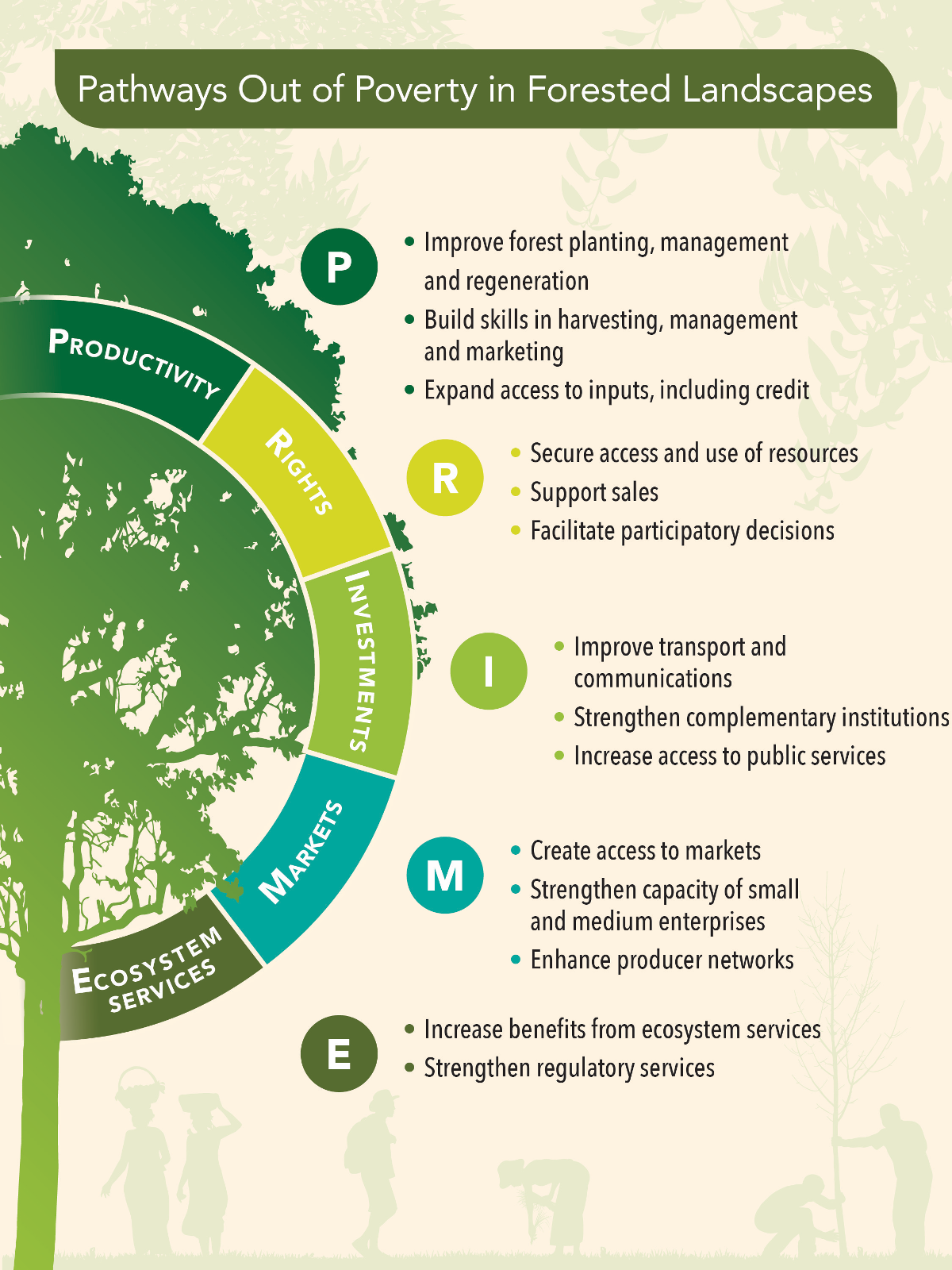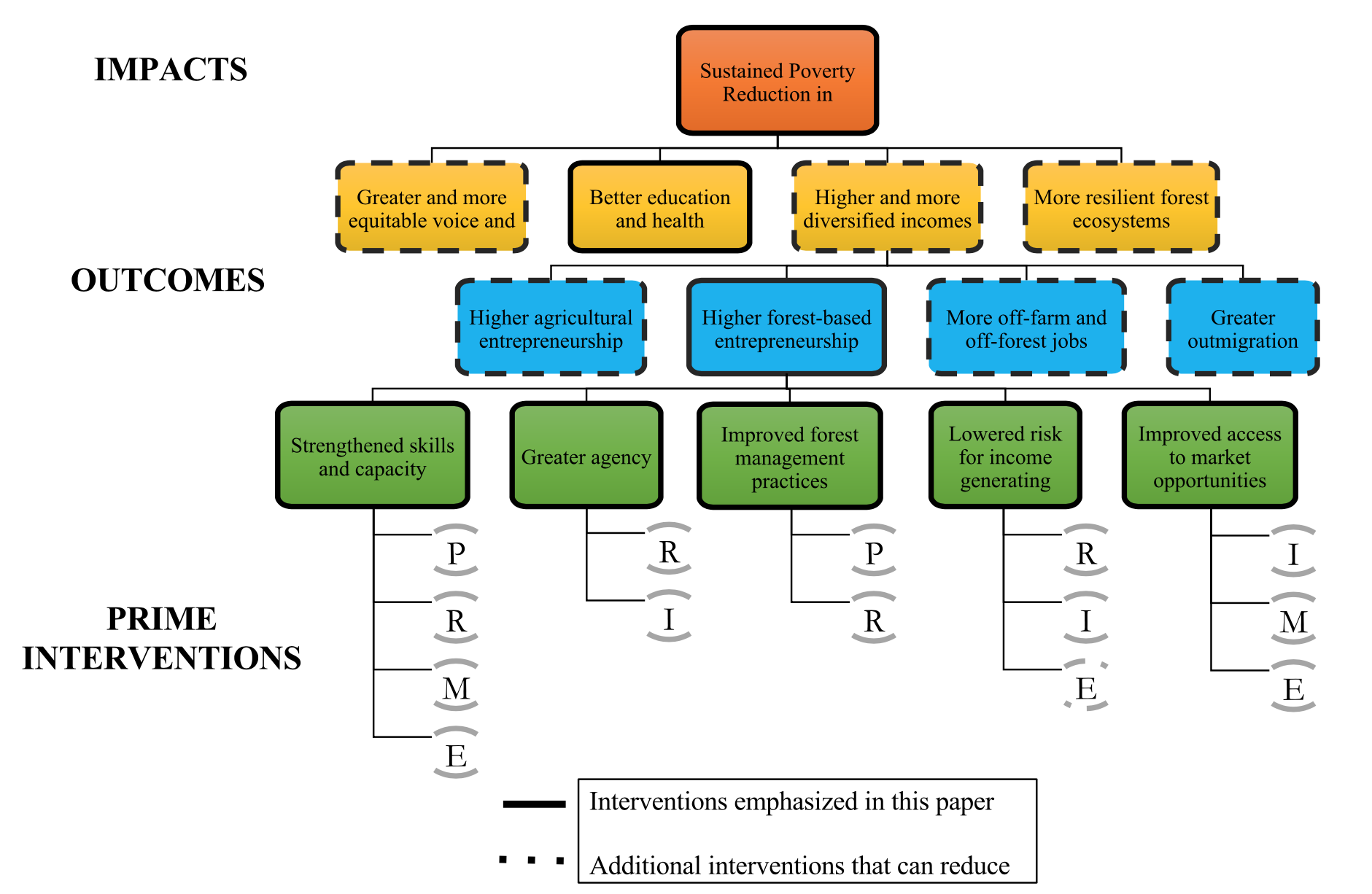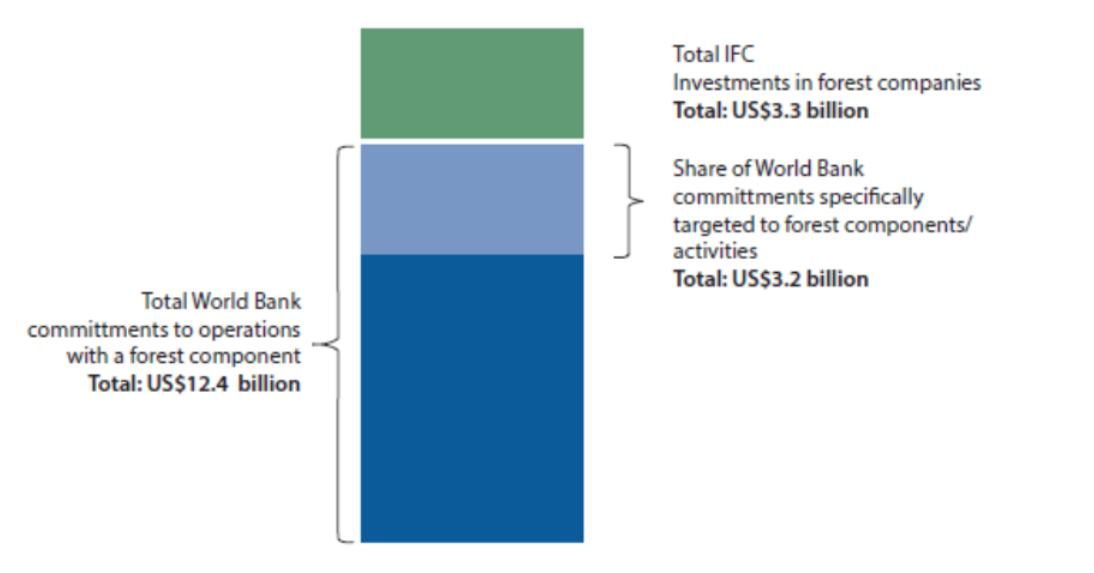PRIME Framework
The PRIME framework helps researchers and practitioners to conceptualize the multiple ways forests contribute to poverty reduction and inform interventions in forest landscapes. Five key strategies for reducing poverty in forest landscapes play and reinforce each other:
- Improvements in productivity (P) of forest land and labor;
- Strengthened community, household and women’s rights (R) over forests and land;
- Regional complementary investments (I) in institutions, infrastructure and public services that facilitate poverty reduction for the forest poor;
- Increased access to markets (M) for timber or non-timber forest products; and
- Mechanisms that enhance and enable the flow of benefits from forest ecosystem services (E) to the poor.

The PRIME framework pays close attention to gender issues as there are major differences in how, why and where men and women access, use, manage and benefit from forests.
Conceptualizing the multiple ways forests may contribute to poverty reduction has potentially high pay-offs in terms of identifying concrete actions to pursue. As shown in the outcome framework, effective poverty reduction in forested landscapes is likely to be conditional on multiple PRIME strategies being implemented simultaneously. Highlighting these synergies, the PRIME framework can help multiple stakeholders – whether a researcher, investor, policymaker or practitioner – to better recognize and articulate which poverty strategy needs to be undertaken in different forest landscapes. The framework is intentionally broad in scope, with the idea that it can be made much more specific when applied to a country or region.

The practical utility of the PRIME framework was tested through a review of the World Bank Group’s forestry lending from 2002 to 2015. To determine whether a project aligned with one or more PRIME strategies, a set of decision criteria was applied to each project. For example, interventions that boosted productivity through enhancements to forestry land, machinery or labor were counted under “P”, while interventions that strengthened rights over forest and/or land either through formal or informal mechanisms were included under “R” (mere inclusion of community members in the design, implementation or monitoring of a project component was not sufficient). Project interventions were counted as regional complementary investments under “I”, if they supported people’s livelihoods in forest landscapes, e.g. through investments in telecommunication or transport services that improved access to forest product markets or institutional reforms that provided some form of livelihood support or social security or lowered the regulatory burden on small-scale forest enterprises.
The review reports that 79 percent of WBG forestry interventions included at least two PRIME strategies, while about a third of the projects had three or more PRIME strategies. The most common theme addressed was regional complementary investments (I), which featured in 71 percent of projects in the sample. This usually came in the form of support for forest department reform, participatory forest land use management and zoning, investment in village infrastructure and community building, monitoring and evaluation of both forest and livelihood outcomes etc. Over a third of the projects had a focus on compensation for ecosystem services (E) and rights (R) together. Access to markets was less targeted, which suggests that current WBG forestry investments do not prioritize the role of timber and NTFP markets for the poor and may primarily support the production end of the value chain.

